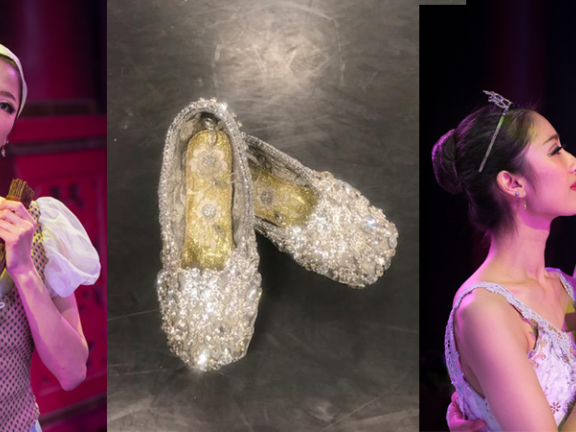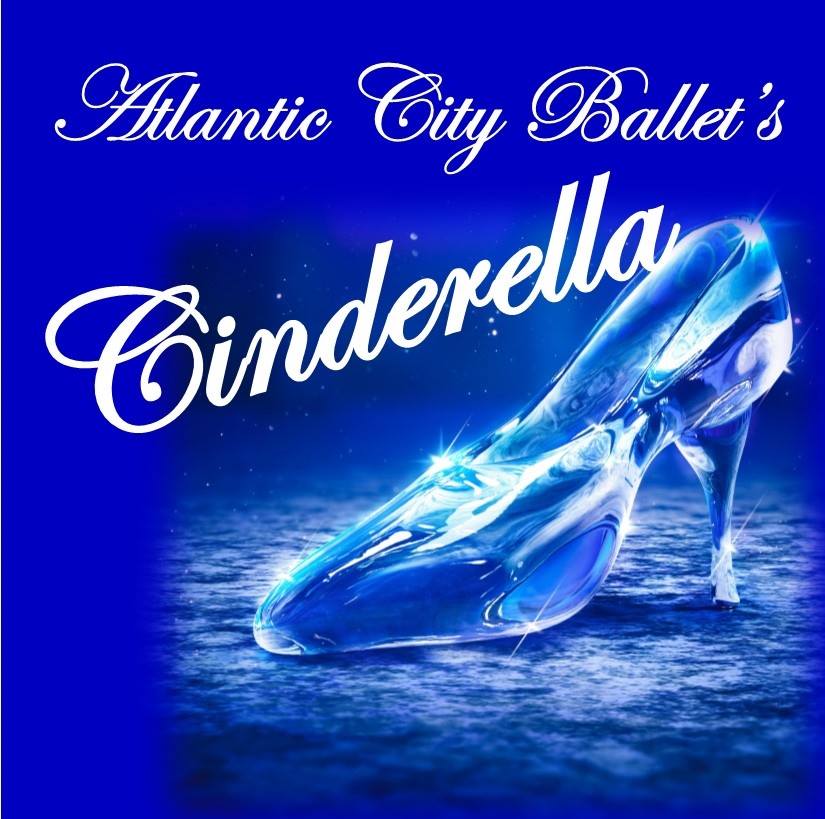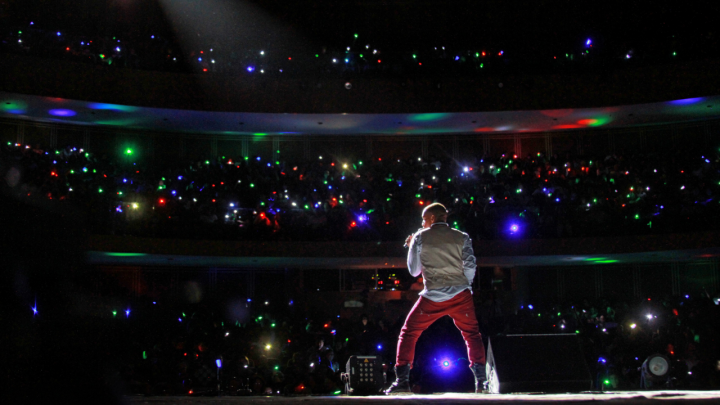A New Version of a Timeless Tale That Never Gets Old: Atlantic City Ballet’s "Cinderella"


There are a few classic stories that can be told a million different ways — in different artforms, time periods, points-of-view — and they just work. For my money, there are two stories that so completely epitomize this: Cinderella and Romeo and Juliet.
I’ll spare you my ramblings on R&J, though, since our topic here today is Cinderella. (Don’t worry: I’ll just make my long-suffering husband listen to the Romeo and Juliet section of my views here. He’s used to stuff like this.)
Think about it: We all know the story of Cinderella and have seen countless retellings — some literal, and some with creative variations. You’ve got the classic 1950s Disney animated film (and its newer live-action version), of course. And the idea of a “Cinderella story” is frequently used, for example, when a sports team goes on an unexpected winning streak, and we wonder when their carriage will turn back into that everyday pumpkin and the streak ends.
But staying with traditional tellings in the arts, some of my other favorites include:
Literary versions, like those by Perrault and the Brothers Grimm,
Musical classics like Rodgers and Hammerstein’s “Cinderella” (you can choose from several made-for-TV versions, as well as the Broadway production), and of course the story is also featured in every musical geek’s favorite show, Sondheim’s “Into the Woods;”
Operas like Rossini’s “La Cenerentola” (and don’t forget Massenet’s “Cendrillon”);
Movies too numerous to count, including “Ever After” (OK, so I know I’m dating myself, but I’ve loved that movie ever since it came out when I was in college), all those “Cinderella Story” movies, “Ella Enchanted” (my kid’s current obsession – the movie, though, not yet the book),
And of course, ballet. The best-known version is surely Frederick Ashton’s, using the Prokofiev score.
Of course, these are just a few examples, so don’t be mad if I missed your favorites.

And while there are millions of variations on the tale, the central core of it is just so enduring: the kind young person (usually a woman), who is either mistreated or otherwise in low circumstances, suddenly experiences a drastic change of fortune and lives happily every after. This change in circumstances is usually portrayed as a kind of reward for being a good person, even in the face of adversity. In contrast, in versions where she has oppressors, their reward is a drastic downgrade in circumstances.
This was all my very idiosyncratic way of saying that we love us a good Cinderella tale, and it’s just such a great story that lends itself to being expressed in a multitude of ways.
But, the way we’re really concerned with here today is ballet, because Atlantic City Ballet is about to premiere its brand-new version of “Cinderella” on May 18. That world premiere performance takes place at Caesars Hotel in Atlantic City, and a subsequent performance takes place the next day, May 19, in Monroe Township.
This production marks the end of the company’s 36th season, and the first time ever that Atlantic City Ballet has performed “Cinderella.” (The company’s founder, artistic director and choreographer, Phyllis Papa, tells me that they’ve done “Romeo and Juliet,” but not Cinderella before now. Because, of course, we ended up chatting about the universality of those two stories during our interview.)
Choosing to mount a Cinderella can be a really smart choice for a company. Everyone knows the basic story: audiences feel comfortable that they know what to expect – no one has to scramble to find the synopsis in the program book before the house lights dim to keep up with the plot. Not only that, but it’s a feel-good story that has a lot of resonance. All of this makes it a really great ballet for first-time attendees, Papa tells me.
But Papa also wanted to appeal to aficionados, too. She wanted to do something a little different with the ballet, something that will make people say, “Ah, THIS is definitely Atlantic City Ballet.” As I mentioned earlier, the classic ballet version here is the one by Frederick Ashton. Papa wanted to do something different – more modern, more avant-garde. In the choreography, she mixes movements up – some characters, like with the step-sisters (danced by men in pointe shoes), whose movements are much closer to jazz. That helps make the ballet more modern and relatable for modern audiences.

I find this idea of traditional vs. modern to be an especially interesting one for Cinderella. Because while the Ashton ballet is thought of as “traditional,” it’s still much more recent than the super-classic ballets like “Swan Lake.” Although many companies will have slightly different versions of that ballet in their repertoire, set by different people, the choreography almost always goes back to that of Marius Petipa in the late 19th century. But our baseline for Cinderella (Ashton’s choreography to Prokofiev’s score) was made at least 50 years later than these other classics.
The Prokofiev score, by the way, was created for a ballet choreographed by Rostislav Zakharov that premiered at the Bolshoi in 1945. Ashton’s ballet premiered in London in 1948 – same score, different choreography. The Atlantic City Ballet version also uses the Prokofiev music, although Papa has trimmed it down to get the whole ballet in at 2 hours.
When you go see Atlantic City Ballet’s “Cinderella” (and you know you will), you might be wondering whether dancers are getting younger these days, or whether you’re just getting older. But I can confirm that some of the dancers you’ll see are, indeed, children. In addition to their valuable roles on stage, incorporating children into these ballets is a really smart move to attract audiences and increase ticket sales. Balanchine was a master at this at New York City Opera. His successor, Peter Martins, once said about Balanchine’s use of children in the Nutcracker: “Each child brings four people: mom, dad, sister, and aunt. Multiply this by all the children in the ballet and you have an audience. How brilliant and how pragmatic. And look what happened. Not only did he do it, but he did the best Nutcracker that you have ever seen, sublime from beginning to end.”
You’ll see children in several parts of the show, including as horsemen pulling Cinderella’s carriage. And speaking of that carriage, Papa told me that she bought it from a ballet company in Mississippi. And no, the carriage DOESN’T come apart, so it had to be trucked on up, “Shipping Wars” style.
Another prop that you’ll want to look out for is Cinderella’s glass slippers. An important focal point to many Cinderella stories, the slippers are a prime moment for props and costumes. (You might remember that in “Ever After,” Drew Barrymore’s slippers were designed by Ferragamo, who is no stranger to the Hollywood spotlight. But in a dance version, slippers are going to also need to be able to perform (kinda literally) on several levels. In Atlantic City Ballet’s case, the slippers were created by one of the parents associated with the company, who is very skilled in decorating pointe shoes. In this case, I believe the technical description would be: She bedazzled the heck out of a pair of pointe shoes.
But you don’t have to take my word for that. Check ‘em out—

Creating an entirely new ballet and teaching it to numerous dancers must take months of work, right? Nope, not for Papa and Atlantic City Ballet. Their typical prep period for a show is three weeks, and that applies to world premiere works like this, too. When I spoke with Papa recently, she said that she had started choreographing with the dancers two weeks earlier. The creation part had just finished when we spoke – and they had one week remaining in which to polish the performance.
When you attend the performance and are done applauding this pretty outstanding effort, make sure you stay around and head to the lobby. Papa has the dancers come out front to mingle with audience members right after the performance – still in costume. And nope, that’s not some special donor benefit – it’s for any and all in attendance. Another smart way to build an audience: create a conversation and a relationship.
The Details
Atlantic City Ballet presents “Cinderella” on Saturday, May 18 at 7:00 p.m. at the Circus Maximus Theater at Caesars Hotel in Atlantic City. Tickets are $45 for adults and $20 for children and students; tickets for seniors are discounted 15% and Atlantic City resident tickets are $15.
A second performance takes place on Sunday, May 19 at 4:00 p.m. at the Richard Marasco Theater, located at 1 Municipal Plaza in Monroe Township. Tickets to this performance are $30 for adults and $25 for patrons; students are free with ID.
For more information and tickets to both performances, visit acballet.org.



